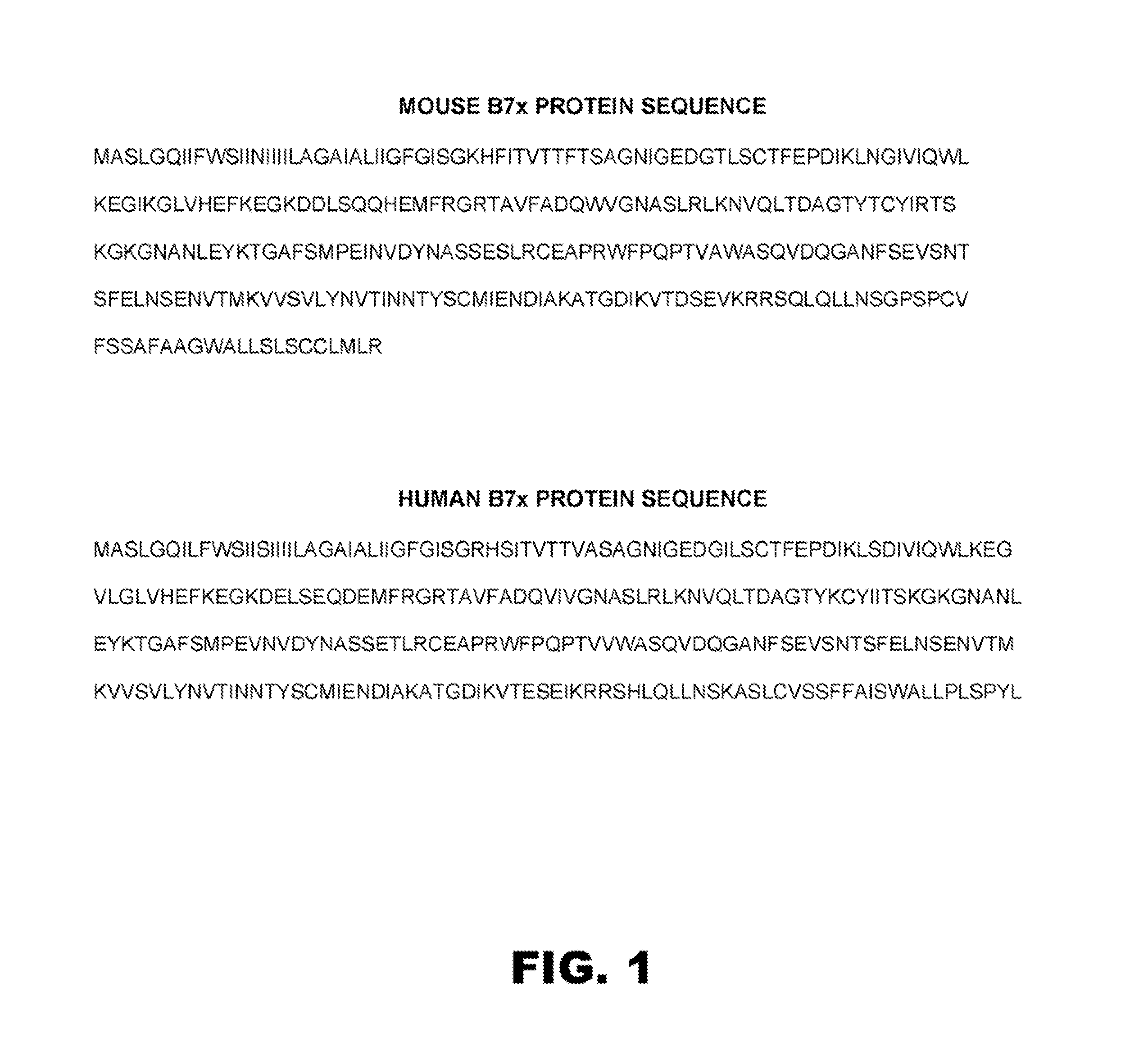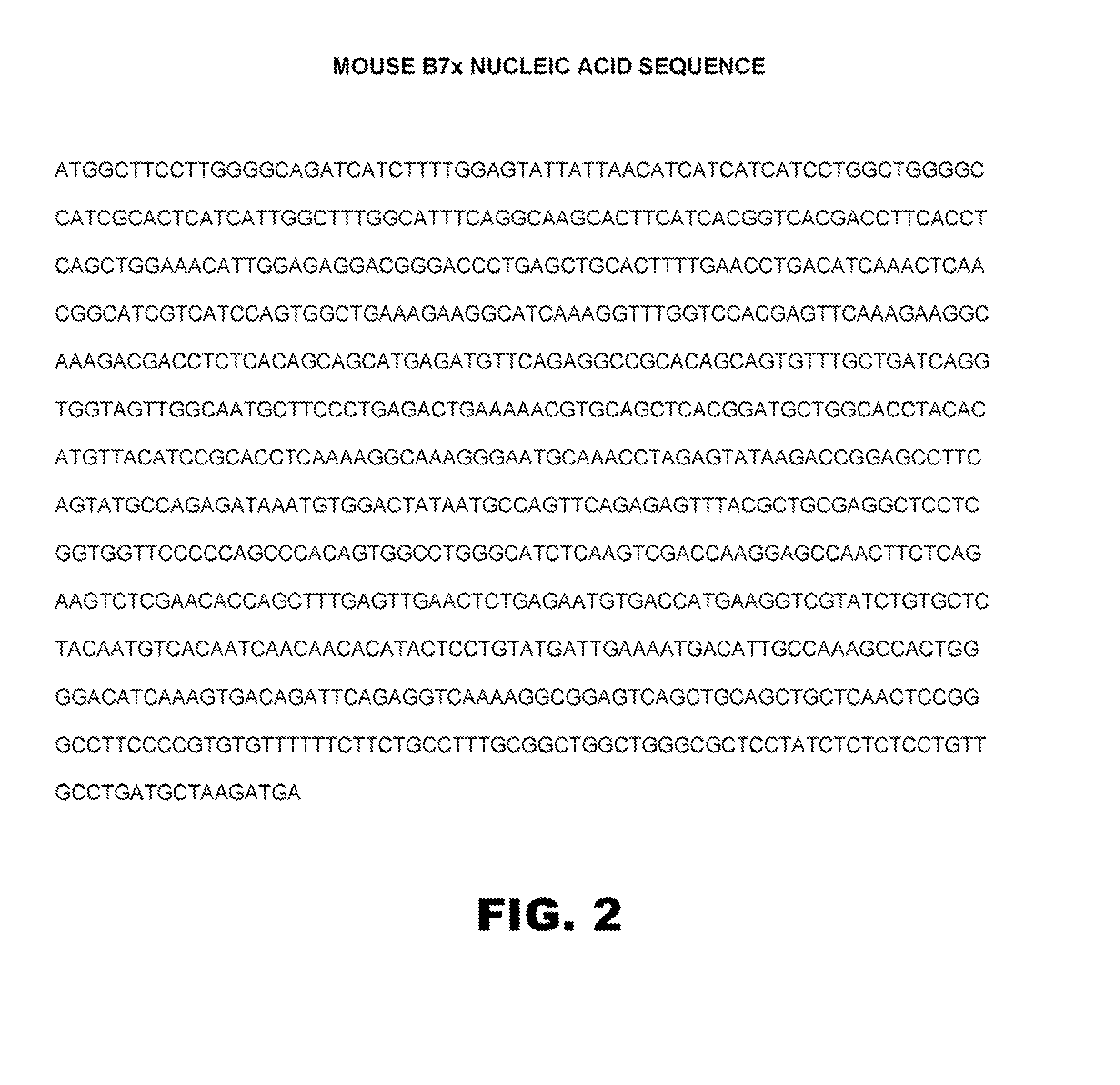Compositions and methods for modulating lymphocyte activity
a composition and lymphocyte technology, applied in the field of immunomodulatory compositions and methods, can solve the problems of often insufficient magnitude of immune responses to many different antigens, which are detectable, and cannot afford to protect against disease processes mediated by agents, so as to improve the outcome of organ and tissue transplantation, improve the effect of btla-mediated signaling, and reduce the activity of autoreactive lymphocytes
- Summary
- Abstract
- Description
- Claims
- Application Information
AI Technical Summary
Benefits of technology
Problems solved by technology
Method used
Image
Examples
examples 1-3
Methods for Examples 1-3
[0355]Mice and cells. Female BALB / c were purchased from Jackson Laboratories (Bar Harbor, Me.) and were used at ages 6-9-weeks-old. Animals were housed in accordance with the Animal Care and Use Committee regulations at the University of California, Berkeley. All cell purifications were performed with magnetic cell sorting separation columns (Milternyi Biotec, Auburn, Calif.) with purities >95%. Macrophages were obtained from peritoneal cavity. All cells were cultured in DMEM supplemented with 10% fetal calf serum, 2.mu·M L-glutamine, and 100 U / ml penicillin and streptomycin (all from BioWhittaker), and 2.mu·M 2-mercaptoethanol (Sigma).
[0356]Production of fusion protein. B7xIg was prepared by fusing the coding region of the extracellular domain of B7x to a chimeric sequence containing the CH2-CH3 domain of mouse IgG1 and a Myc-His-tag in pcDNA4 (a gift from Dr. William Sha, UC Berkeley). The construct was linearized with Bgl II and transfected into 293T cells...
example 1
Expression of B7x
[0363]The expression of B7x mRNA in human and mouse tissues was analyzed by Northern blot hybridization. Human B7x was present in a single 3.2-kb mRNA readily detectable in kidney, liver, spleen and placenta. Mouse B7x had three transcripts of 1.9, 3.5 and 8.2 kb, and was expressed significantly in liver, testis, kidney, lung and heart (FIG. 7). With RT-PCR, B7x mRNA was also detected in mouse spleen, prostate, lymph node, thymus, eye, pancreas, B cells, T cells, macrophages, and dendritic cells. (FIG. 8, and data not shown).
[0364]Interestingly, 5 of 8 mouse B7x ESTs located in database searches had been derived from mammary tumors, and 3 of 6 human B7x ESTs originated from ovarian and uterine tumors. To determine whether expression of B7x might be a regular feature of tumors, we used Northern blot analysis to examine a panel of mouse tumors for B7x mRNA expression. Most of the tumor cell lines tested, including NB41A3 (neuroblastoma), P815 (mastocytoma), L1210 (lym...
example 2
B7x Inhibits T Cell Activation Processes
[0367]Initial experiments used purified T cells activated with plate-bound anti-CD3 in the presence of different amounts of immobilized B7xIg. B7xIg decreased proliferation and IL-2 production in a dose-dependent fashion. Additional experiments with purified T cell subsets showed that B7xIg inhibited both CD4 and CD8 T cell responses (FIG. 14). We next employed a conventional costimulation assay. Purified T cells were activated with different amounts of plate-bound anti-CD3 in the presence of CHO transfectants expressing either GFP, B7.2 or B7x. As expected, T cells stimulated in the presence of B7.2 / CHO exhibited enhanced proliferation and cytokine production compared to control GFP / CHO. In contrast, B7x / CHO significantly reduced T cell proliferation and cytokine production (FIG. 15). In order to determine the effect of B7x on T cell activation in the face of costimulation, we also used CHO cells which expressed B7.2 or coexpressed B7.2 and B...
PUM
 Login to View More
Login to View More Abstract
Description
Claims
Application Information
 Login to View More
Login to View More - R&D
- Intellectual Property
- Life Sciences
- Materials
- Tech Scout
- Unparalleled Data Quality
- Higher Quality Content
- 60% Fewer Hallucinations
Browse by: Latest US Patents, China's latest patents, Technical Efficacy Thesaurus, Application Domain, Technology Topic, Popular Technical Reports.
© 2025 PatSnap. All rights reserved.Legal|Privacy policy|Modern Slavery Act Transparency Statement|Sitemap|About US| Contact US: help@patsnap.com



